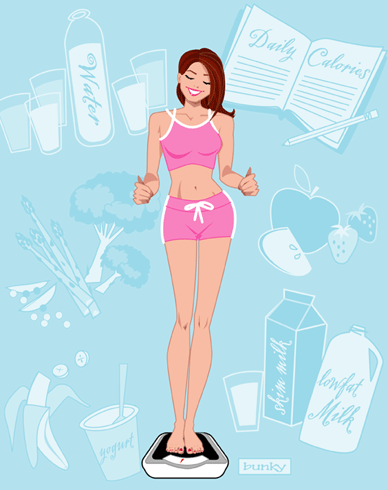Autism continues to hit the news (see article below). The Sunday Parade had a warming article on the many facets of autism. Today, the local news reported a missing teenager. The greater emphasis? He had autism. The good news? He was found.
My heart's concerns have broadened due to having clients whose children have autism. While I have not trained any of the children in Pilates, I have been a nutritional consultant for them. Before we get into physical and nutritional suggestions, let's take a look at the face of autism.
Considering 30+ years ago autism stats were 1 in 10,000 children, the 21st century stats are alarming. According to the Center for Disease Control 1 in 166 children are living with some form of autism's daily demands. Too, we know that boys are more likely to be its choice. Why? is the clarion call. Is it genetics? Is it the mercury in vaccines? Is it in the food they eat? So many unanswered questions.
Thankfully, we have evolved into a greater sensitivity from the past. Years ago (early 1900s) Eugen Bleuler coined the name autism and claimed it was schizophrenia. In the 1940s others(Bruno Bettelheim, Leo Kanner)blamed it on what was called, "The Refrigerator Mother". Mothers of autistic children were accused of not providing sufficient amounts of interaction with their child, therefore causing the autism. In 1964 Bernard Rimland wrote Infantile Autism shedding new light and redeeming these misaligned mothers. Then came Rain Man with Tom Cruise and Dustin Hoffman giving autism the long awaited audience it deserved.
Over 30 years ago was my first encounter with autism. My fiance, at the time, was researching the subject for his degree in psychology. It definitely caught my attention. Little did we know just how profound it would hit our society and people we would come to know and love.
Pilates and Autism?
Yes, the two can work well together. While I have not had the privilege of working with a client with autism, I know that Pilates can provide a healthy piece to the puzzle.
Dawn-Marie Ickes is an example. She is a PT as well as a certified Pilates instructor and has reported positive results while working with children with autism. She found that Pilates helped with both movement transitions and environment transitions which are the two biggest challenges autistic children face. She found a way to incorporate activities to keep them organized before working on their gait-related issues and motor skills. She focused on their vestibular and proprioceptive systems as a prep activity which helped the therapeutic intervention.
She incorporated the Pilates Reformer and the jump board as well in their therapy. The Reformer helped them to focus and transition from exercise to exercise as well as giving them a sense of better balance and awareness. The jump board helped to provide a linear combination of vestibular and proprioceptive input. To read more about her findings, please check out: Pilates' Surprising Benefits, November 2006.
Please note that it is NOT recommended that an autistic child be placed under the care of just any Pilates instructor but a highly qualified professional who understands not just Pilates but autism rehabilitation.
My heart's concerns have broadened due to having clients whose children have autism. While I have not trained any of the children in Pilates, I have been a nutritional consultant for them. Before we get into physical and nutritional suggestions, let's take a look at the face of autism.
Considering 30+ years ago autism stats were 1 in 10,000 children, the 21st century stats are alarming. According to the Center for Disease Control 1 in 166 children are living with some form of autism's daily demands. Too, we know that boys are more likely to be its choice. Why? is the clarion call. Is it genetics? Is it the mercury in vaccines? Is it in the food they eat? So many unanswered questions.
Thankfully, we have evolved into a greater sensitivity from the past. Years ago (early 1900s) Eugen Bleuler coined the name autism and claimed it was schizophrenia. In the 1940s others(Bruno Bettelheim, Leo Kanner)blamed it on what was called, "The Refrigerator Mother". Mothers of autistic children were accused of not providing sufficient amounts of interaction with their child, therefore causing the autism. In 1964 Bernard Rimland wrote Infantile Autism shedding new light and redeeming these misaligned mothers. Then came Rain Man with Tom Cruise and Dustin Hoffman giving autism the long awaited audience it deserved.
Over 30 years ago was my first encounter with autism. My fiance, at the time, was researching the subject for his degree in psychology. It definitely caught my attention. Little did we know just how profound it would hit our society and people we would come to know and love.
Pilates and Autism?
Yes, the two can work well together. While I have not had the privilege of working with a client with autism, I know that Pilates can provide a healthy piece to the puzzle.
Dawn-Marie Ickes is an example. She is a PT as well as a certified Pilates instructor and has reported positive results while working with children with autism. She found that Pilates helped with both movement transitions and environment transitions which are the two biggest challenges autistic children face. She found a way to incorporate activities to keep them organized before working on their gait-related issues and motor skills. She focused on their vestibular and proprioceptive systems as a prep activity which helped the therapeutic intervention.
She incorporated the Pilates Reformer and the jump board as well in their therapy. The Reformer helped them to focus and transition from exercise to exercise as well as giving them a sense of better balance and awareness. The jump board helped to provide a linear combination of vestibular and proprioceptive input. To read more about her findings, please check out: Pilates' Surprising Benefits, November 2006.
Please note that it is NOT recommended that an autistic child be placed under the care of just any Pilates instructor but a highly qualified professional who understands not just Pilates but autism rehabilitation.
Nutrition Therapy?
That will have to be the topic of another post. I will say nutrition, I believe, is a critical part of the solution. Which vitamins, supplements, foods, etc. to use? While I believe there are definitely certain ones that prove to be helpful, as in any case, each child is an individual with unique nutritional needs.
Let's pray for a cure. In the meantime, I hope we all find a way to be a part of the solution. Some suggestions:
- Be an encouragement to those whose children have autism
- Contributing financially to the cause
- Learning more about it and sharing what we know
The following is an article worth noting:Health Highlights: April 24, 2008 - MSN Health & Fitness - Health Topics:
"Proximity to Mercury Pollution Source Linked to Autism Risk The first study to show a statistical relationship between autism and proximity to industrial sites that release mercury has been published by researchers at the University of Texas Health Science Center at San Antonio. Their analysis of data from 1,040 Texas school districts and data from 39 coal-fired power plants and 56 industrial facilities in the state showed that autism rates decreased by one percent to two percent for each 10 miles of distance from a mercury pollution source.
Among the other findings: For every 1,000 pounds of mercury released by all industrial sources in Texas in 1998, there was a corresponding 2.6 percent increase in autism rates in Texas school districts in 2002. For every 1,000 pounds of mercury released by Texas power plants in 1998, there was a corresponding 3.7 percent increase in autism rates in Texas school districts in 2002.
The research appears in the journal Health & Place. 'This study was not designed to understand which individuals in the population are at risk due to mercury exposure. However, it does suggest generally that there is greater autism risk closer to the polluting source, lead author Raymond Palmer, associate professor of family and community medicine, said in a prepared statement. -----"
"Proximity to Mercury Pollution Source Linked to Autism Risk The first study to show a statistical relationship between autism and proximity to industrial sites that release mercury has been published by researchers at the University of Texas Health Science Center at San Antonio. Their analysis of data from 1,040 Texas school districts and data from 39 coal-fired power plants and 56 industrial facilities in the state showed that autism rates decreased by one percent to two percent for each 10 miles of distance from a mercury pollution source.
Among the other findings: For every 1,000 pounds of mercury released by all industrial sources in Texas in 1998, there was a corresponding 2.6 percent increase in autism rates in Texas school districts in 2002. For every 1,000 pounds of mercury released by Texas power plants in 1998, there was a corresponding 3.7 percent increase in autism rates in Texas school districts in 2002.
The research appears in the journal Health & Place. 'This study was not designed to understand which individuals in the population are at risk due to mercury exposure. However, it does suggest generally that there is greater autism risk closer to the polluting source, lead author Raymond Palmer, associate professor of family and community medicine, said in a prepared statement. -----"
Published earlier.
Copyright © 2008-2012 by Pilates Worx 4 Life. All rights reserved. Check out website: www.pilatesworx4life.com






 Enjoy
Enjoy











